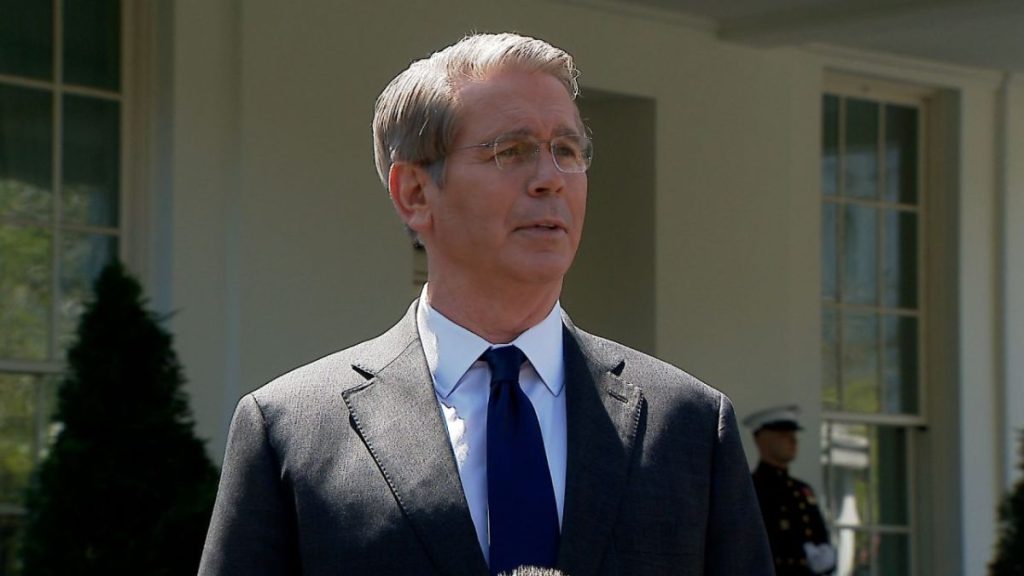Trump’s Tariffs and the Ripple Effect on U.S. Economy and Home Security
The ongoing U.S.-China trade war continues to significantly impact the global economy, with escalating tariffs causing disruptions in multiple sectors. Treasury Secretary Scott Bessent recently denied reports that the U.S. would unilaterally slash tariffs on Chinese imports, asserting that both sides must mutually agree to reduce tariffs.
These trade tensions are now affecting various industries, from manufacturing to real estate. Homeowners, in particular, are seeing rising costs in construction materials, home security systems, and overall property investments.
Economic Impact of Trump’s Tariffs
The U.S. has imposed heavy tariffs on Chinese goods, which are causing inflationary pressures across several industries. According to Scott Bessent, tariffs are at unsustainable levels, and both countries need to reduce them for trade talks to proceed as per Yahoo Finance.
The back-and-forth between the two economic giants has driven up prices for everything from household products to construction materials, creating higher costs for consumers. Additionally, companies like Tesla have reported disruptions due to export curbs on rare earth materials, highlighting the tangible effects of the trade war.
These rising costs, particularly for imports from China, are making homeownership and home improvements more expensive, limiting affordable options for buyers.
The Link Between Tariffs and Homeownership
With tariffs on key materials such as steel and aluminum rising, homebuilders and potential buyers are feeling the pressure. Construction costs have increased, leading to delays and higher prices for new homes and renovations.
This poses a significant challenge to homeownership, as these added costs could prevent many from entering the housing market or force homeowners to delay planned upgrades. The uncertainty surrounding trade policies only heightens concerns, making it crucial for homeowners to find cost-effective solutions for home security and maintenance.
Why Robust Home Security Matters When Trade Winds Shift

Trade policy rarely feels personal—until its knock‑on effects reach your front door. With tariff levels on Chinese imports still hovering anywhere from 7.5 percent on niche goods to a punishing 125 percent “reciprocal” rate, raw‑material prices feed straight into higher insurance premiums, rising burglary rates in stressed local economies, and costlier call‑outs for repair services.
A slower housing market can also mean longer vacancies between owners or tenants—prime windows for opportunistic crime. In short, economic uncertainty triggered by tariffs raises both the likelihood and the cost of a loss.
That makes a resilient, layered security strategy less of an optional add‑on and more of a financial hedge. Start with the basics—solid‑core exterior doors, ANSI‑Grade 1 deadbolts, window locks—and add tech that stretches your rupee or dollar further: DIY smart alarm hubs that waive monthly fees, battery‑backed Wi‑Fi cameras with local storage to dodge cloud‑subscription costs, and sensor‑driven LED lighting that cuts utility bills while deterring intruders.
If you already have a professionally monitored system, call the provider and negotiate; many firms are quietly discounting contracts to keep churn low during inflationary cycles. Finally, protect resale value by choosing devices certified for Matter or Z‑Wave so the next buyer can adopt your network without rewiring—future‑proofing against both tech obsolescence and further tariff shocks on imported hardware.
You can also read about how immigration policies are shaping beer shopping habits in America here: Trump Immigration Crackdown Is Quietly Changing How Americans Shop for Beer at Night
Government Regulation Watch : What Could Change Next

Trade policy is ultimately a political lever, and 2025 is shaping up to be an active year on that front. Two scenarios dominate expert forecasts:
- Gradual Reciprocal Reductions: If Beijing and Washington agree to staged roll‑backs, look for the U.S. to begin trimming Section 301 duties on building‑hardware categories (smart locks, CCTV components, rare‑earth magnets) first, because they pinch U.S. manufacturers as much as Chinese exporters. A 10–15 percent cut here would flow straight to shelf prices, making late‑2025 an attractive window for large security upgrades or home additions.
- Escalation Before Negotiation: Conversely, either side could hike niche tariffs (for example, lithium‑ion cells or composite lumber) to gain bargaining chips. Homeowners planning battery‑backed alarm systems or deck extensions should lock in quotes early and use “price‑protect” clauses with contractors.
Keep an eye on the U.S. International Trade Commission docket and China’s Ministry of Commerce announcements; both agencies publish 30–60 day comment periods before rule changes take effect, offering a valuable early‑warning signal for material price swings.
Actionable Checklist: Secure Your Home and Your Budget
- Audit existing security layers: Walk the perimeter at dusk, note dark zones, weak locks, or outdated sensors. Catalogue what can be fixed with low‑tariff domestic goods (e.g., motion‑LED bulbs) versus import‑heavy items (AI cameras).
- Phase big purchases: Divide projects into quarterly spends; reassess global tariff news each quarter to capitalise on any duty relief before ordering the next batch of gear.
- Leverage community buying power: Coordinate with neighbours for bulk orders of fencing, door hardware, or camera kits—suppliers often waive a portion of the tariff uplift on larger invoices.
- Negotiate insurance give‑backs: Present your insurer with proof of upgraded locks, monitored alarms, and burglary‑resistant glazing; request premium reductions and allocate the savings to offset higher hardware costs.
- Choose upgradable ecosystems: Prefer security hubs that accept firmware updates and third‑party sensors; this protects your investment if tariffs force brand‑switches or future parts scarcity.
- Monitor tariff trackers: Set Google Alerts for “Section 301 tariff list updates” and “China reciprocal tariff changes” so you can pause or accelerate projects in step with policy moves.
By pairing a forward‑looking eye on regulation with smart, staged investments in security, homeowners can buffer themselves against tariff turbulence—turning policy uncertainty into a catalyst for safer, more resilient living spaces.
Conclusion
The U.S.–China tariff saga continues to inject uncertainty into household budgets, construction costs, and even the price of smart‑home gadgets. Yet by staying informed—tracking government timetables, favouring modular security tech, and leveraging insurance or bulk‑buy savings—homeowners can blunt the financial sting while actually upgrading their safety net.
Tariffs may rise or fall, but a layered, future‑ready security strategy will keep paying dividends long after the trade winds shift.
Want more in‑depth guides on safeguarding your property without overspending? Visit our website for weekly insights, step‑by‑step tutorials, and product round‑ups tailored to smart, security‑minded homeowners.
Disclaimer: This article is for informational purposes only and does not constitute financial, legal, or professional advice. Tariff rates, government policies, and product availability can change rapidly; always verify current regulations and consult qualified professionals before making significant home‑improvement or security investments.


